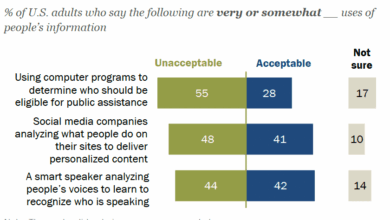Microsoft Security A Future Outlook
Microsoft security and the road ahead sets the stage for this exploration, diving deep into Microsoft’s current security posture, emerging threats, and innovative research. We’ll examine their strategies for securing the cloud, enterprises, open-source projects, and developer communities. This in-depth look will also discuss future trends in cybersecurity and how Microsoft is adapting to them.
From analyzing recent security achievements and vulnerabilities to comparing their approach with competitors, this analysis covers the full spectrum of Microsoft’s security efforts. We’ll also explore how Microsoft is integrating emerging technologies like AI and machine learning into their security strategy.
Microsoft’s Current Security Posture
Microsoft’s commitment to cybersecurity extends beyond simply offering products; it’s a fundamental aspect of their entire ecosystem. Their approach prioritizes proactive threat detection, robust infrastructure, and continuous improvement in response to the ever-evolving cyber landscape. This commitment is evident in their diverse range of security tools and services, and their consistent response to emerging threats.Microsoft’s security posture is a multifaceted strategy that encompasses a wide array of products and services, designed to protect users and organizations from a broad spectrum of threats.
This approach is not static; it adapts to the constant evolution of cyberattacks and vulnerabilities.
Microsoft’s Security Infrastructure
Microsoft’s security infrastructure is built on a foundation of advanced technologies and dedicated personnel. Key products and services include Azure Security Center, Microsoft Defender for Endpoint, and Microsoft 365 security. These tools provide a layered defense, addressing vulnerabilities at various points within the digital ecosystem.
- Azure Security Center: This cloud-based security platform provides a comprehensive suite of tools for managing and monitoring security across the entire Azure cloud environment. It offers threat detection, vulnerability management, and security recommendations to maintain a robust and secure cloud infrastructure.
- Microsoft Defender for Endpoint: This solution provides endpoint protection for devices, detecting and responding to threats that may target workstations, servers, or other endpoints. It leverages advanced threat intelligence to prevent, detect, and respond to cyberattacks.
- Microsoft 365 Security: This suite of security tools protects emails, files, and other data within the Microsoft 365 platform. It includes features like advanced threat protection, secure email gateways, and data loss prevention measures.
Recent Security Achievements and Advancements
Microsoft consistently invests in research and development to stay ahead of emerging threats. Their efforts are focused on proactive threat intelligence, innovative security technologies, and effective vulnerability mitigation.
- Proactive Threat Intelligence: Microsoft maintains a vast network of threat intelligence feeds and constantly updates its security systems to identify and respond to emerging threats. This allows for rapid detection and response, preventing widespread attacks.
- Innovative Security Technologies: Microsoft is at the forefront of developing new security technologies, such as machine learning-based threat detection systems and advanced threat hunting tools. This ensures that their security measures remain cutting-edge and effective against evolving attacks.
- Vulnerability Mitigation: Microsoft proactively addresses vulnerabilities by releasing security updates and patches in a timely manner. This mitigates the risk of exploitation and ensures the protection of users and organizations.
Security Response to Recent Cyber Threats and Vulnerabilities
Microsoft has demonstrated a robust and rapid response to recent cyber threats and vulnerabilities. Their approach includes immediate vulnerability patching, incident response measures, and the sharing of threat intelligence with the broader cybersecurity community.
- Vulnerability Patching: Microsoft quickly releases patches to address vulnerabilities that may be exploited by attackers. This swift response minimizes the window of opportunity for malicious actors to take advantage of security flaws.
- Incident Response: Microsoft maintains a dedicated incident response team to address and mitigate security incidents. This team collaborates with affected parties to limit the impact of any breach and restore systems as quickly as possible.
- Threat Intelligence Sharing: Microsoft actively shares threat intelligence with other organizations and security researchers. This collaboration allows for a more comprehensive understanding of the cyber threat landscape and helps in the collective defense against malicious actors.
Comparison of Microsoft’s Security Approach to Other Major Tech Companies
The following table compares Microsoft’s security approach to those of other major technology companies.
| Feature | Microsoft | Amazon | Apple | |
|---|---|---|---|---|
| Proactive Threat Intelligence | Extensive network of threat intelligence feeds; proactive threat hunting | Strong threat intelligence gathering and analysis; focus on AI-driven detection | Comprehensive threat monitoring; partnership with security vendors | Strong focus on device security; limited public threat intelligence sharing |
| Security Infrastructure | Multi-layered security across cloud and endpoint platforms | Extensive security across cloud and Android ecosystems | Robust cloud security with emphasis on AWS security services | Strong focus on device security; less emphasis on cloud security |
| Response to Threats | Rapid patching and incident response; proactive sharing of threat intelligence | Quick patching and incident response; extensive threat intelligence resources | Proactive patching and incident response; strong emphasis on security compliance | Focus on device security and data protection; limited public incident response information |
Emerging Threats and Vulnerabilities: Microsoft Security And The Road Ahead

The cybersecurity landscape is constantly evolving, presenting new and sophisticated threats to organizations like Microsoft. Staying ahead of these emerging dangers requires a proactive approach, encompassing vulnerability analysis, threat modeling, and continuous adaptation of security protocols. Microsoft’s vast ecosystem, spanning numerous products and services, makes it a prime target for attackers, demanding a nuanced understanding of the evolving attack vectors.Understanding these threats is crucial to fortifying Microsoft’s defenses and mitigating potential risks.
This includes identifying vulnerabilities in existing systems, anticipating novel attack techniques, and implementing robust security measures to protect user data and maintain the integrity of their services.
Sophisticated Phishing and Social Engineering Tactics
Phishing attacks, leveraging increasingly sophisticated techniques, pose a significant threat. Attackers employ intricate social engineering strategies, mimicking legitimate communications to trick users into revealing sensitive information or downloading malicious software. These attacks often exploit vulnerabilities in human psychology and can bypass traditional security measures. For instance, convincing email impersonations, or exploiting social media trends to spread malware, highlight the evolving nature of this threat.
A common example involves spear phishing campaigns targeting specific individuals within an organization, exploiting their knowledge of internal systems and processes to make the attack more convincing.
Rise of AI-Powered Attacks
The increasing adoption of Artificial Intelligence (AI) is leading to more sophisticated and automated attacks. Attackers are utilizing AI to generate realistic phishing emails, create deepfakes for impersonation, and automate the exploitation of vulnerabilities. This capability allows for more efficient and targeted attacks, increasing the likelihood of success. For example, AI-powered tools can quickly identify and exploit weaknesses in software, enabling attackers to develop malware tailored to specific systems.
This requires a focus on AI-resistant security measures to mitigate the threat.
Supply Chain Attacks
Supply chain attacks are gaining prominence as a significant threat vector. Attackers infiltrate the software supply chain, targeting trusted vendors and inserting malicious code into legitimate software packages. This method allows attackers to bypass traditional security measures and gain access to numerous systems by targeting one vulnerable point in the supply chain. For instance, compromising a widely used library or framework can affect numerous dependent applications, potentially affecting a large number of users.
Cloud Security Risks, Microsoft security and the road ahead
Cloud environments, while offering significant advantages, introduce new security risks. Misconfigurations, unauthorized access, and insider threats pose significant vulnerabilities. Properly securing cloud infrastructure is essential to protect sensitive data stored or processed in these environments. The need to enforce strict access controls, monitor for suspicious activities, and regularly update cloud security configurations is paramount.
Security Protocols and Best Practices for Developers
The development process itself plays a crucial role in preventing vulnerabilities. Implementing robust security protocols and best practices from the outset can significantly reduce the risk of exploitation.
- Secure Coding Practices: Adhering to secure coding standards, such as input validation, output encoding, and avoiding common vulnerabilities like SQL injection and cross-site scripting, is essential. These techniques help mitigate risks associated with coding errors. Properly validating user input to prevent injection attacks is crucial.
- Vulnerability Scanning and Penetration Testing: Regularly scanning for vulnerabilities in software and conducting penetration tests are vital for identifying and addressing weaknesses before they are exploited. Automated vulnerability scanners can detect potential problems within the codebase.
- Security Awareness Training: Equipping developers with knowledge about common security threats and best practices is crucial. Training should focus on recognizing and avoiding potential vulnerabilities during the development process.
- Multi-Factor Authentication (MFA): Implementing MFA for all development accounts and sensitive systems provides an additional layer of security, protecting against unauthorized access.
- Principle of Least Privilege: Granting developers only the necessary access rights to perform their tasks minimizes the potential impact of a compromise.
Security Research and Innovation
Microsoft’s commitment to cybersecurity extends beyond reactive measures to encompass proactive research and innovation. This proactive approach is crucial in anticipating and mitigating emerging threats, ultimately fortifying the digital landscape. The company’s ongoing investment in security research is instrumental in developing cutting-edge solutions that protect users and organizations alike.This dedication to innovation fosters a secure digital ecosystem by not only identifying vulnerabilities but also developing robust solutions.
The research is constantly evolving, adapting to the ever-changing threat landscape, and continuously strengthening the security posture of Microsoft’s products and services.
Ongoing Security Research Initiatives
Microsoft’s security research initiatives encompass a wide range of activities, from fundamental research in cryptography and network security to applied research in threat detection and response. These efforts aim to stay ahead of evolving cyber threats, providing a critical defense against malicious actors.
- Advanced threat analysis:
- Developing new security technologies:
- Collaboration with the security community:
Microsoft continuously analyzes sophisticated attacks to understand their techniques and motivations. This deep dive into threat actor behavior is crucial for developing effective countermeasures and protecting against future intrusions. This includes understanding the motivations, methods, and tools of attackers to anticipate future threats.
Microsoft invests heavily in the development of novel security technologies, such as advanced machine learning algorithms for threat detection, and secure hardware design principles. These advancements are essential to address the growing complexity of modern cyberattacks.
Microsoft actively collaborates with researchers, academics, and industry partners to share insights and knowledge, collectively strengthening the collective security posture. This collaboration fosters a more secure digital ecosystem, and encourages innovation in the field. Joint research projects and knowledge sharing help to develop more effective countermeasures against malicious activities.
Innovative Security Solutions
Microsoft has developed a diverse array of innovative security solutions, leveraging advanced technologies to protect against sophisticated threats. These solutions demonstrate the company’s commitment to pushing the boundaries of cybersecurity.
- Azure Security Center:
- Defender for Endpoint:
- Microsoft Threat Intelligence Center (MSTIC):
This cloud-based security platform provides comprehensive security monitoring, threat detection, and incident response capabilities. Azure Security Center helps customers protect their cloud workloads from potential threats. It’s a valuable tool for organizations looking to enhance their cloud security posture and manage potential risks.
This endpoint security solution offers comprehensive protection against malware, ransomware, and other threats targeting endpoints. Defender for Endpoint leverages machine learning and threat intelligence to proactively detect and respond to advanced threats, providing a proactive defense against malicious attacks.
This center provides threat intelligence and analysis to help organizations understand and mitigate evolving cyber threats. MSTIC plays a critical role in providing timely and actionable insights to help organizations proactively respond to emerging threats and vulnerabilities.
Strategies for a Secure Digital Ecosystem
Microsoft employs several strategies to foster a secure digital ecosystem, emphasizing collaboration and knowledge sharing. These strategies are crucial in addressing the evolving cyber landscape and promoting a secure environment for all users.
- Building strong partnerships:
- Promoting security awareness and education:
- Open-source contributions:
Microsoft works closely with governments, law enforcement agencies, and industry partners to enhance the collective cybersecurity posture. This cooperation is essential in combating sophisticated threats and sharing information effectively.
Microsoft provides resources and training to individuals and organizations to enhance their understanding of cybersecurity best practices. These initiatives promote a culture of security awareness, and empower individuals to make informed decisions to mitigate potential risks.
Microsoft contributes to open-source projects that improve the security of software and systems. These contributions benefit the wider community by improving overall security and strengthening the digital ecosystem.
Microsoft Security Research Teams
| Team Name | Focus Area |
|---|---|
| Microsoft Threat Intelligence Center (MSTIC) | Gathering, analyzing, and disseminating threat intelligence to organizations and researchers. |
| Security Research Group | Fundamental research in cryptography, network security, and other security areas. |
| Azure Security Engineering Team | Development and improvement of security features for Microsoft’s cloud platform (Azure). |
| Microsoft Defender Research Team | Advanced threat detection and response research and development, particularly focusing on endpoint security. |
The Future of Microsoft Security
The cybersecurity landscape is constantly evolving, presenting new challenges and opportunities for organizations like Microsoft. Anticipating these future trends and adapting security strategies proactively is paramount to maintaining a strong defense. Microsoft’s future security posture hinges on its ability to leverage emerging technologies, cultivate a proactive security culture, and foster strategic partnerships.
Microsoft’s security posture is always a hot topic, and the road ahead is paved with interesting challenges. Recent advancements like IBM and SUSE achieving a security certification for Linux ( ibm and suse achieve security cert for linux ) show a growing commitment to robust systems. This trend will likely influence how Microsoft approaches security in the future, especially in the face of ever-evolving threats.
Potential Future Trends in Cybersecurity
The future of cybersecurity is characterized by the convergence of several critical trends. Sophistication in attacks will continue to increase, demanding advanced defensive mechanisms. The rise of AI-powered attacks will require AI-driven security solutions. The increasing reliance on cloud computing will necessitate robust cloud security measures, and the proliferation of IoT devices will expand the attack surface, necessitating more distributed and proactive security strategies.
Leveraging Emerging Technologies for Enhanced Security
Microsoft can leverage emerging technologies to bolster its security posture. Quantum computing, while posing potential threats, also presents opportunities for developing new cryptographic algorithms and security protocols. Blockchain technology can enhance data integrity and transparency in supply chains and software development, reducing vulnerabilities. The development of advanced threat detection and response systems based on machine learning and AI can provide an important edge in identifying and mitigating emerging threats.
The combination of these technologies can significantly enhance the effectiveness of security measures.
The Role of AI and Machine Learning in Microsoft’s Future Security Strategy
AI and machine learning are becoming increasingly integral to cybersecurity. AI-powered threat detection systems can analyze massive datasets of security events to identify anomalies and potential threats in real-time. Machine learning algorithms can adapt to new threats and vulnerabilities more rapidly than traditional security systems, improving accuracy and efficiency. Microsoft can leverage AI and machine learning to automate security tasks, enhance incident response, and proactively identify and mitigate risks.
Potential Partnerships and Collaborations
Strategic partnerships and collaborations can strengthen Microsoft’s security posture. Collaborating with government agencies and law enforcement can share threat intelligence and best practices. Partnering with other technology companies to develop and deploy common security standards and protocols can create a more resilient ecosystem. Industry-wide collaborations will lead to shared knowledge and resources, potentially reducing vulnerabilities and bolstering security for everyone.
For example, Microsoft could partner with companies like Google or Cloudflare to develop joint security solutions for cloud environments.
Importance of Employee Training and Awareness Programs
Employee training and awareness programs are crucial to Microsoft’s security strategy. A well-trained workforce is the first line of defense against cyberattacks. Regular training programs can educate employees on identifying phishing attempts, recognizing suspicious emails, and handling sensitive data responsibly. Raising awareness about the risks of social engineering and other common attack vectors is crucial to protecting Microsoft’s systems and data.
This proactive approach is essential in mitigating human error, a significant contributor to security breaches.
Security and the Cloud

The cloud has revolutionized how businesses operate, offering scalability, accessibility, and cost-effectiveness. However, this shift also introduces new security challenges. Microsoft, as a leading cloud provider, has invested heavily in robust security architectures to ensure the safety and reliability of its cloud services, particularly Azure. Understanding these architectures and the associated security considerations is crucial for businesses leveraging cloud technology.Microsoft’s cloud security strategy is multifaceted, focusing on a layered approach to protect data, applications, and infrastructure.
This approach emphasizes proactive security measures, including advanced threat detection, secure access management, and continuous vulnerability assessments. This layered security model extends to every aspect of Azure, from the physical infrastructure to the software applications.
Microsoft’s Cloud Security Architecture Evolution
Microsoft’s cloud security architecture has evolved significantly over the years. Early iterations focused on fundamental security principles, such as access control and encryption. Modern architectures incorporate advanced technologies like machine learning and artificial intelligence to detect and respond to threats in real time. The evolution is a continuous process driven by evolving threat landscapes and the need for increased resilience against sophisticated attacks.
Security Considerations in Azure
Security considerations in Azure services extend beyond traditional on-premises security concerns. Cloud-specific threats, like insider threats, malicious actors targeting cloud infrastructure, and supply chain attacks, are increasingly prevalent. Azure’s security posture addresses these threats through dedicated security tools, services, and partnerships.
Comparison with Competitors
Microsoft Azure competes with other major cloud providers like AWS and Google Cloud Platform. While all offer robust security solutions, the specific implementations, strengths, and weaknesses of each platform vary. Microsoft Azure emphasizes a comprehensive security approach that integrates security into every aspect of the cloud platform, including the infrastructure, applications, and data. Competitive platforms have unique security strengths and weaknesses, and often focus on specific areas, such as specific types of workloads.
Security Features and Protocols in Azure Services
| Azure Service | Security Features | Security Protocols |
|---|---|---|
| Azure Storage | Data encryption at rest and in transit, access control lists (ACLs), hierarchical namespace for data organization, and built-in auditing capabilities. | HTTPS, encryption standards (e.g., AES-256), secure access protocols like Azure Active Directory. |
| Azure Virtual Machines (VMs) | Secure boot, network security groups (NSGs), virtual network (VNet) configurations for isolation, intrusion detection systems (IDS), and advanced threat protection (ATP). | SSH, RDP, secure communication protocols for VMs, and compliance with security standards. |
| Azure SQL Database | Secure connections via TLS, encryption at rest, and dynamic security features for real-time threat detection. | TLS encryption, secure network connectivity. |
| Azure Active Directory (Azure AD) | Multi-factor authentication (MFA), role-based access control (RBAC), conditional access policies, and privileged identity management. | Secure authentication protocols, secure communication channels for user identities. |
This table provides a brief overview of the security features and protocols implemented in several key Azure services. Each service has a detailed set of security controls to protect data, applications, and infrastructure.
Microsoft’s security posture is always a hot topic, and the road ahead looks complex. However, advancements like Sharp’s new 3D display laptop, the Mevius PC RD3D , might offer some interesting security implications, especially concerning data encryption and potential vulnerabilities in 3D display technology. Ultimately, these innovations will shape the future of security, and we’ll need to adapt accordingly.
Security and the Enterprise
Microsoft’s approach to enterprise security is multifaceted, adapting to the ever-evolving needs of businesses. From protecting sensitive data to enabling secure collaboration, Microsoft’s solutions aim to empower organizations to operate safely and efficiently in today’s digital landscape. This involves not only robust technical safeguards but also a commitment to ongoing security research and innovation.Microsoft recognizes that enterprise security demands a comprehensive strategy that considers various factors, including the organization’s size, industry, and specific security requirements.
This approach emphasizes proactive measures to prevent threats and ensure business continuity in case of breaches.
Microsoft’s Enterprise Security Solutions
Microsoft provides a suite of security solutions tailored to different enterprise needs. These solutions span from cloud-based security platforms to on-premises security tools. They leverage advanced technologies to detect and respond to threats effectively. Examples include Azure Security Center, Microsoft Defender for Endpoint, and Microsoft 365 security features.
Examples of Microsoft Security Solutions in Action
Microsoft’s security solutions empower enterprises in diverse ways. Azure Security Center, for instance, provides centralized security management across the entire cloud infrastructure. This allows for proactive threat detection and automated response mechanisms. Microsoft Defender for Endpoint safeguards on-premises devices, offering real-time threat protection and advanced threat hunting capabilities. Microsoft 365 security features protect sensitive data and communication channels within the organization, including email and collaboration tools.
Challenges in Securing Enterprise Environments with Microsoft Products
Implementing and maintaining robust security in enterprise environments with Microsoft products faces specific challenges. The complexity of hybrid environments, where on-premises and cloud-based resources coexist, demands careful configuration and management. The increasing sophistication of cyberattacks and the evolving threat landscape require continuous adaptation and vigilance. Ensuring compliance with various industry regulations and standards is also a significant hurdle.
Microsoft’s security posture in the coming years is intriguing. With Intel’s recent announcement to focus on broadband wireless chips like intel to focus on broadband wireless chips , it’s clear that the underlying hardware is rapidly evolving. This shift will undoubtedly influence future security strategies, forcing Microsoft to adapt and stay ahead of the curve in protecting their users.
Opportunities for Enhanced Security
Opportunities abound in enhancing enterprise security using Microsoft products. The increasing adoption of cloud services, like Azure, creates opportunities to implement centralized security management and gain visibility across the entire infrastructure. Microsoft’s continuous innovation in security solutions and the availability of comprehensive security training and support empower organizations to leverage advanced threat protection and detection capabilities.
Security Best Practices for Enterprise Deployments
A strong security posture for enterprise deployments of Microsoft products relies on several best practices. These include:
- Multi-Factor Authentication (MFA): Implementing MFA for all user accounts significantly reduces the risk of unauthorized access, enhancing security by adding a second layer of authentication beyond passwords.
- Regular Security Assessments and Penetration Testing: Conducting regular security assessments and penetration testing helps identify vulnerabilities in the system before attackers exploit them. This proactive approach allows for timely remediation and strengthens overall security posture.
- Data Loss Prevention (DLP): Implementing DLP solutions safeguards sensitive data from unauthorized access, transfer, or destruction. This ensures compliance with data protection regulations and minimizes the risk of data breaches.
- Security Awareness Training: Educating employees about common security threats and best practices is critical. A well-trained workforce can act as a first line of defense against phishing attacks and other social engineering tactics.
- Secure Configuration Management: Implementing consistent and secure configurations across all Microsoft products, both on-premises and in the cloud, is vital. This includes regular updates, patches, and adherence to security best practices.
Security and Open Source
Microsoft’s commitment to security extends to its engagement with open-source technologies. This is not just about leveraging these technologies for product development, but also about actively participating in the security landscape surrounding them. Understanding the security implications of open-source contributions and Microsoft’s role in safeguarding these contributions is crucial for a comprehensive approach to security.Microsoft recognizes that open-source projects are often developed by a large and diverse community, with each contributor potentially introducing code that could impact security.
This inherent collaborative nature necessitates robust protocols and a proactive approach to security.
Microsoft’s Leverage of Open-Source Technologies
Microsoft leverages a wide array of open-source technologies to enhance its products and services. This includes using open-source libraries for specific functionalities, like cryptography or networking, as well as integrating open-source tools into its development pipelines. The benefits of this approach are multifaceted, ranging from cost savings to access to a broader pool of expertise.
Security Implications of Open-Source Contributions
Open-source projects, due to their collaborative nature, are susceptible to vulnerabilities introduced by contributors. These vulnerabilities can arise from various factors, including coding errors, design flaws, or even malicious intent. These vulnerabilities, if left unaddressed, can expose systems to significant security risks.
Microsoft’s Role in Open-Source Security Initiatives
Microsoft actively participates in open-source security initiatives, contributing to the development and maintenance of secure coding practices, vulnerability disclosure programs, and bug bounty programs. Microsoft’s participation goes beyond simply identifying and reporting vulnerabilities; it often involves collaborating with other organizations and communities to implement fixes and improve overall security standards. This proactive approach helps to ensure the security of open-source components used by its products and the wider community.
Security Protocols for Integrating Open-Source Components
To mitigate the risks associated with open-source contributions, Microsoft employs rigorous security protocols throughout the integration process. These protocols encompass the following:
- Code Review Processes: Rigorous code review processes are employed to identify potential vulnerabilities early in the development cycle. This often involves multiple layers of review and analysis, looking for common coding mistakes, potential security flaws, and adhering to established security standards.
- Vulnerability Management: Microsoft actively monitors and manages open-source vulnerabilities, using automated tools and dedicated teams to identify and assess potential risks. The process involves classifying vulnerabilities, prioritizing remediation efforts, and communicating potential risks to development teams.
- Security Testing: Thorough security testing is applied to open-source components integrated into Microsoft products. This includes penetration testing, static and dynamic analysis, and other methods to uncover potential weaknesses in the software.
- Continuous Monitoring: Microsoft continuously monitors open-source projects for updates, patches, and emerging vulnerabilities. This proactive approach allows for quick responses to newly discovered security threats and minimizes potential damage to systems.
Security and the Developer Community
Microsoft recognizes the critical role developers play in building secure applications. A strong developer community, equipped with the right tools and resources, is essential to mitigating security risks in the digital landscape. This focus extends beyond simply providing security tools; it’s about fostering a culture of secure development practices.Microsoft actively engages with developers through various initiatives, aiming to empower them with the knowledge and skills needed to create secure software.
This includes providing comprehensive resources, support, and training to help developers understand and implement best practices. The ultimate goal is to create a more secure digital ecosystem by empowering developers to build security into their applications from the ground up.
Microsoft’s Support for Secure Development Practices
Microsoft provides a range of resources and tools to help developers build security into their applications. These resources encompass a variety of formats, from documentation and training to hands-on labs and community forums. The aim is to equip developers with the necessary knowledge and practical skills to build secure applications.
Developer Community Engagement Initiatives
Microsoft actively engages with the developer community through various channels, including online forums, meetups, and conferences. These platforms facilitate direct interaction between developers, providing opportunities for knowledge sharing and the identification of potential security challenges. The goal is to encourage a proactive approach to security within the development lifecycle. This collaborative environment allows developers to learn from each other’s experiences and contribute to the collective understanding of secure coding practices.
Resources for Developers to Enhance Application Security
Microsoft offers a substantial collection of resources designed to assist developers in enhancing the security of their applications. These resources include comprehensive documentation, interactive training modules, and access to dedicated support channels. These resources span various aspects of secure coding practices, from threat modeling and vulnerability analysis to secure coding guidelines and best practices.
Secure Coding Practices: Resources and Tools
| Resource Category | Description | Example |
|---|---|---|
| Documentation | Comprehensive guides, tutorials, and articles on secure coding practices. | Microsoft’s secure coding guidelines, detailed explanations of common vulnerabilities. |
| Training Materials | Interactive workshops, online courses, and webinars focusing on secure development. | Microsoft’s Azure Security Center training modules, workshops on secure API design. |
| Tools and Libraries | Specialized tools and libraries for static analysis, dynamic analysis, and vulnerability detection. | Microsoft’s Security Development Lifecycle (SDL) tools, open-source security testing frameworks. |
| Community Forums | Online platforms for developers to ask questions, share knowledge, and discuss security issues. | Microsoft’s Developer Community forums, Stack Overflow. |
| Vulnerability Databases | Resources to stay up-to-date with the latest security vulnerabilities and threats. | National Vulnerability Database (NVD), Microsoft’s security advisories. |
Final Wrap-Up
In conclusion, Microsoft’s security strategy is a complex and multifaceted undertaking, addressing various facets of the digital landscape. The company’s dedication to research, innovation, and community engagement positions them well for the future of cybersecurity. The evolving threat landscape necessitates constant adaptation, and Microsoft’s commitment to staying ahead of the curve is evident in their comprehensive approach. Their future success hinges on their ability to continuously improve and adapt to the ever-changing cybersecurity landscape.







